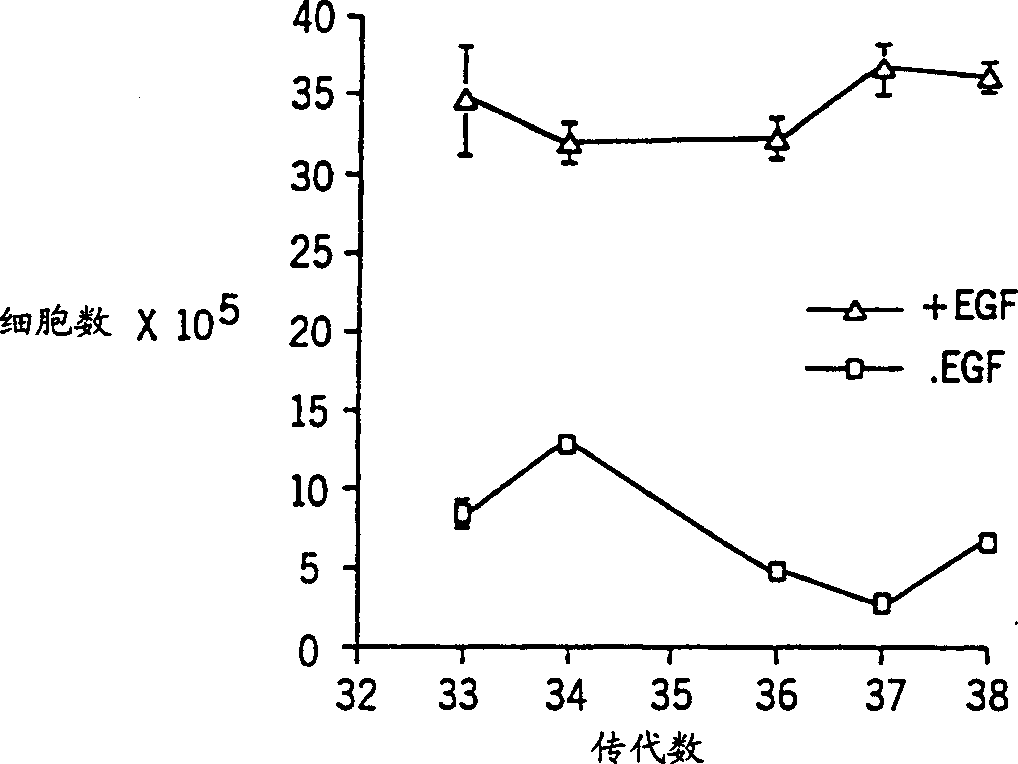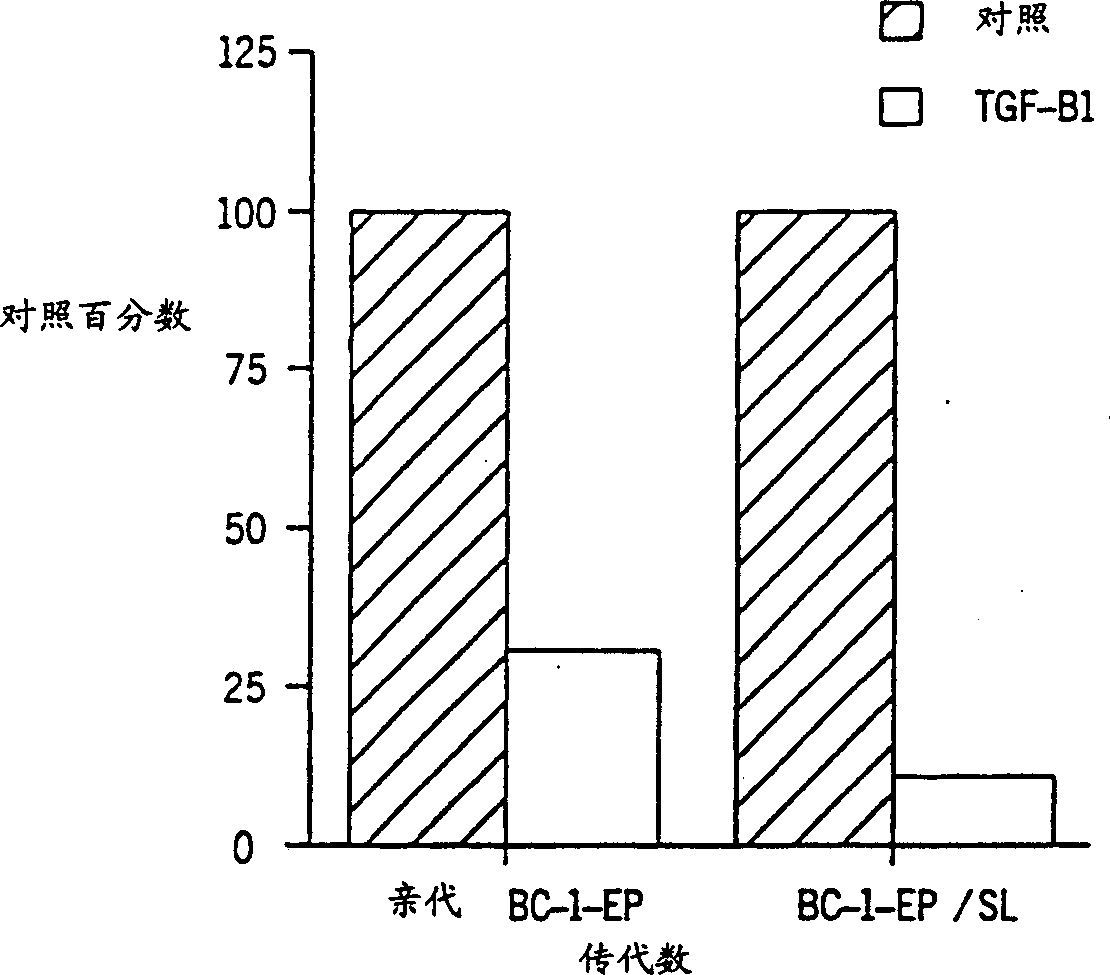Immortalized human kerationocyte cell line
A technology of keratinocytes and cell lines, applied in the field of infinitely proliferating human keratinocytes, can solve the problem of poor understanding of tumor molecular activities
- Summary
- Abstract
- Description
- Claims
- Application Information
AI Technical Summary
Problems solved by technology
Method used
Image
Examples
Embodiment 1
[0234] Treatment Adhesive Suspended Example 1 Parent (*4th generation) 1.51% 43.3%
Embodiment 2
[0235] BC-1-Ep / SL (31st generation) 1.32% 69.8% Example 2 Parental generation (6th generation) 1.79% 32.8%
[0236]BC-1-Ep / SL (33rd generation) 1.05% 73.7%
[0237] Table 4
[0238] Effect of DNA concentration on transient transfection efficiency in BC-1-Ep / SL cells
[0239] DNA concentration
8 / 26 / 97
%GFP + cells
12 / 16 / 97
%GFP + cells
12 / 22 / 97
%GFP + cells
15 micrograms pGL + 5 micrograms pcDNA3
3.79%
13.64%
9.88%
20 micrograms pGL + 6.7 micrograms pcDNA3
3.2%
5.25%
8.85%
25 micrograms pGL + 8.3 micrograms pcDNA3
1.98%
12.49%
3.33%
Cell confluence
70%
35-40%
35.40%
[0240] table 5
[0241] The ratio of DNA to GeneFECTOR affects transient transfection efficiency
[0242] The ratio of DNA to Genefector
1 / 30 / 98
%GFP + cells
2 / 20 / 98
%GFP + cells
2 / 20 / 98
%GFP + cells
1∶2
...
PUM
 Login to View More
Login to View More Abstract
Description
Claims
Application Information
 Login to View More
Login to View More - R&D
- Intellectual Property
- Life Sciences
- Materials
- Tech Scout
- Unparalleled Data Quality
- Higher Quality Content
- 60% Fewer Hallucinations
Browse by: Latest US Patents, China's latest patents, Technical Efficacy Thesaurus, Application Domain, Technology Topic, Popular Technical Reports.
© 2025 PatSnap. All rights reserved.Legal|Privacy policy|Modern Slavery Act Transparency Statement|Sitemap|About US| Contact US: help@patsnap.com



